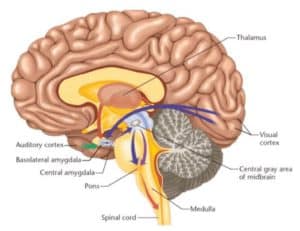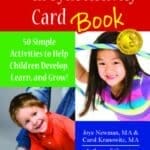Have you heard of the ‘Amygdala’? Did you know it is thought that an enlarged amygdala could be causing anxiety, sensory processing differences and more.
The amygdala is thought to be a part of the limbic system within the brain, which is responsible for emotions, survival instincts, and memory.
In his workshops Dr Tony Attwood discusses the studies that have found that the amygdala is enlarged in children with autism spectrum disorder (ASD). He believes this is why we see children not being able to regulate behaviour, unusual reactions to pain and more.
He also discusses how the amygdala is responsible for detection of threats and mobilising an appropriate behavioural response, part of which is fear. Therefore, it is probable it contributes to their abnormal fears and increased anxiety.
I think this helps us understand why people with ASD do what they do (anxiety, sensory sensitivities, behavioural meltdowns, etc.) and also why we need to use specific strategies like: Routines, Visuals, Cognitive Behaviour Therapy and Occupational Therapy. In my experience these strategies all help support students to engage and participate in situations they find stressful and overwhelming. I guess you could call it ‘re-training the brain’. By undertaking these strategies we are helping the child process and cope in otherwise stressful situations.
Amygdala – limbic structure involved in many brain functions, including emotion, learning and memory. It is part of a system that processes ‘reflexive’ emotions like fear and anxiety.
What is known about the amygdala is that it has a dual sensory input system. The amygdala is specialised for reacting to stimuli and triggering a physiological response, a process that would be described as the ‘emotion’ of fear. Once an emotion has been turned on, it is difficult for the cortex to turn it off.
Imagine you are in a heightened state of fear. Would you want routines, pre-warnings about change? Would you over react to noises, light, touch? Would you want to control your environment and need time on your own to calm from the increased anxiety?
Many children with ASD can become sensory overloaded or have another diagnosis of SPD (Sensory Processing Disorder).
Sensory overload can look like:
- Refusing activities
- Racing heartbeat
- Hysterical crying
- Covering ears
- Hiding or running away
- Extreme sensitivity to sound, light, etc.
- Stomach distress – nausea, vomiting, cramps (or insisting on sitting on toilet) Sweating
- Agitation or anger
- Repeating actions or words
- Change in complexion – skin flushes/goes pale
- Loss of balance.
Occupational Therapists often introduce a sensory diet which aims to enhance the child’s efferent and appropriate response to sensory stimulation. In my experience, home and school/preschool also need to encourage and support the child to engage in a range of sensory activities. When children play outside, climb on equipment, do puzzles, paintings etc. they are developing essential sensory, perceptual and visual skills. Many children with ASD and SPD need to be encouraged to try a range of these activities as we know they are a vital part of a child’s physical, emotional and academic success. There is a great new book full of wonderful activities to help children develop, learn and grow called The In-Sync Activity Card Book..
New book full of wonderful activities
 The In-Sync Activity Card Book
The In-Sync Activity Card Book
By Carol Kranowitz & Joye Newman
Divided into beginner, intermediate, and advanced activities, each card tells you why and how the activity works, what you need for it, and ways to make it more challenging. It also tells you what to look for, to make sure the child is getting the most out of the activity. Spiral bound in a book which includes 57 handy activity cards to help kids grow, learn, and develop to the best of their abilities!

